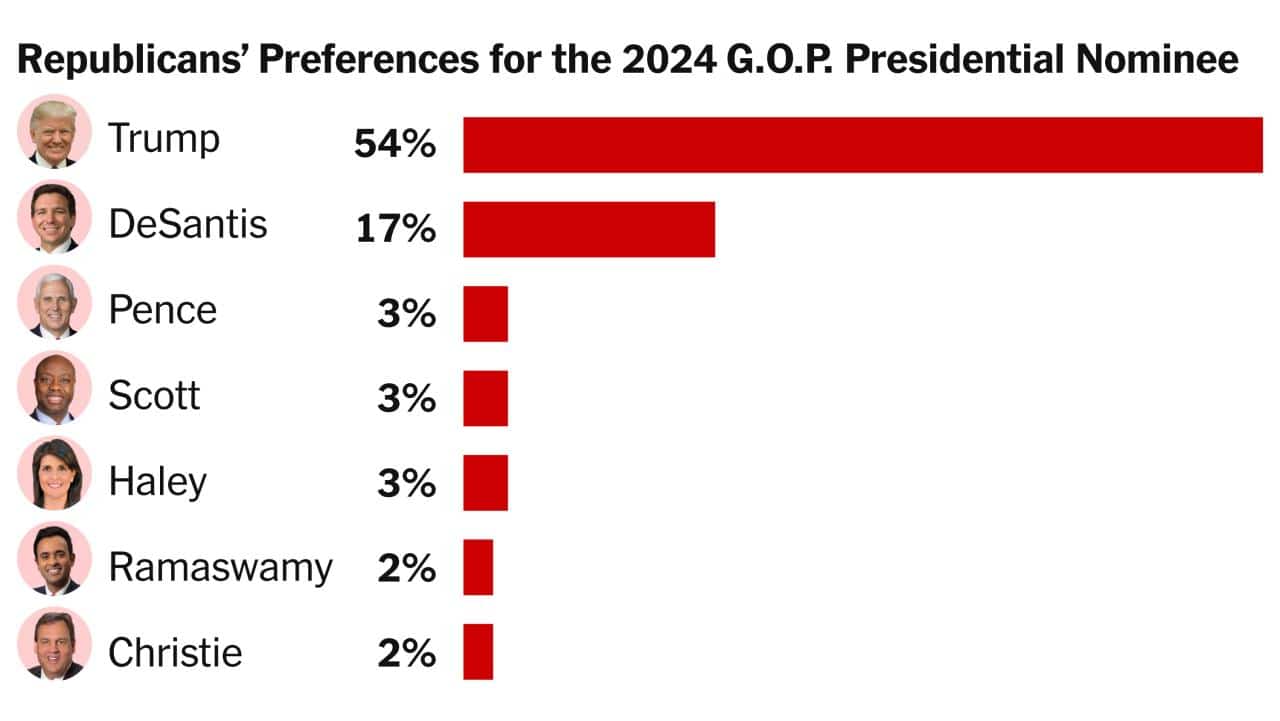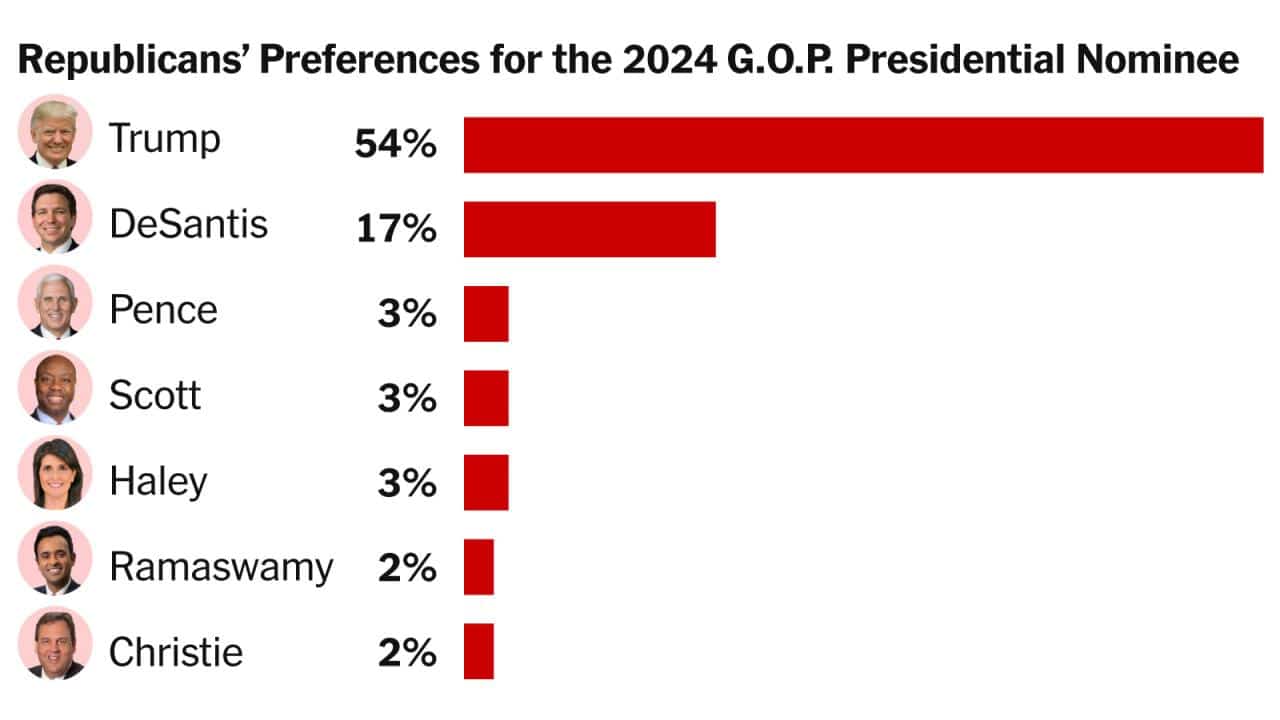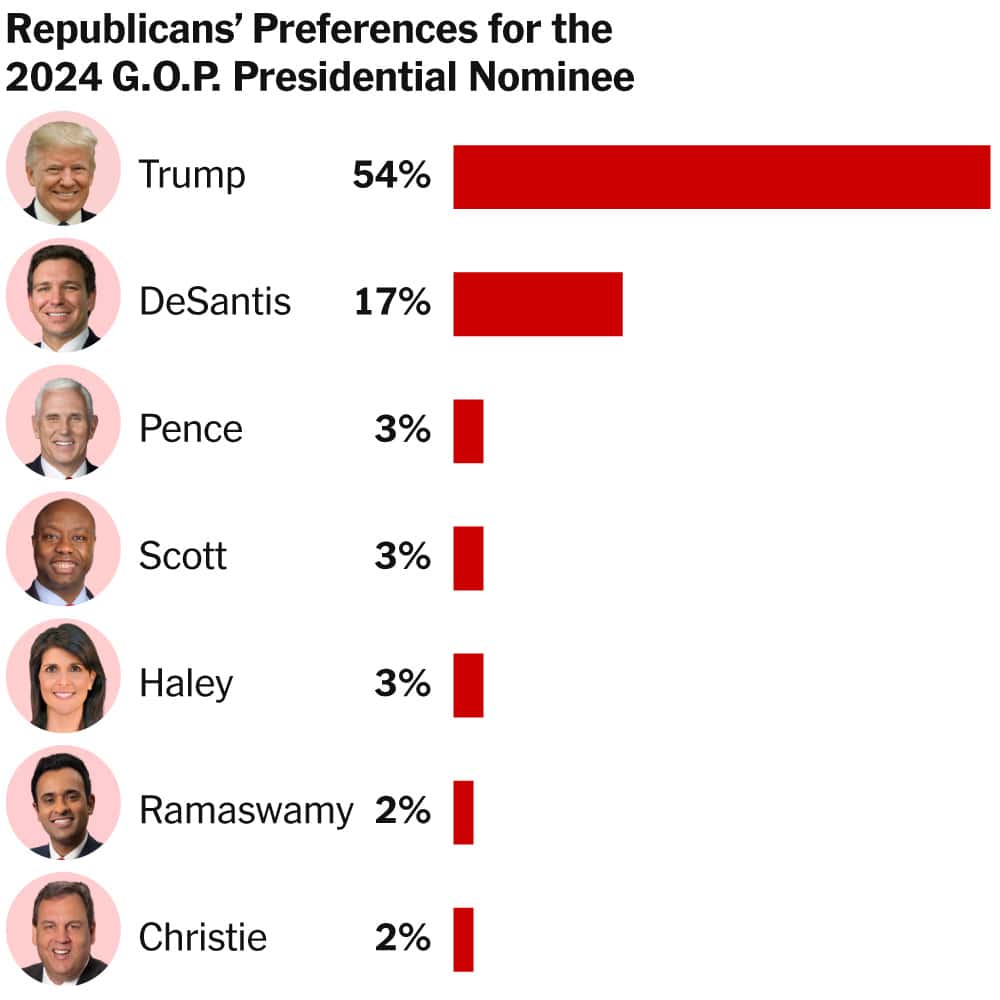Who Is Ahead In The Presidential Polls? This question dominates the minds of voters and political analysts alike as we approach the upcoming election. The race is tight, with candidates vying for the support of a nation grappling with a multitude of challenges.
The latest polls provide a snapshot of the current landscape, offering insights into the preferences of the electorate.
Understanding the dynamics of presidential polls requires a careful examination of the methodologies employed, the historical context, and the factors influencing voter sentiment. By analyzing these elements, we can gain a deeper understanding of the race and its potential implications for the future of the nation.
The political discourse often centers around hot button political topics that spark debate and controversy. These discussions are often intertwined with recent problems in the US , such as economic instability or social unrest.
Current Presidential Poll Landscape
The current presidential election is shaping up to be a close race, with polls showing a tight contest between the two leading candidates. To understand the current political climate and potential election outcomes, it’s crucial to analyze the latest polls from reputable sources.
Navigating the complexities of the political world can be challenging, but staying informed is crucial. Understanding the political issues at play is essential, and following Congress news provides valuable insight.
Summary of Recent Presidential Polls
A variety of polling organizations conduct surveys to gauge public opinion on the presidential race. These polls use different methodologies, sampling techniques, and question wording, which can lead to variations in results. It’s important to consider the poll’s methodology, sample size, and margin of error when interpreting the data.
The US political landscape is constantly evolving, with a myriad of issues taking center stage. From the current political issues in the US to the projected 2024 election results , there’s always something to keep citizens engaged.
| Poll | Date | Candidate A | Candidate B | Sample Size | Margin of Error |
|---|---|---|---|---|---|
| [Poll Name 1] | [Date] | [Percentage] | [Percentage] | [Sample Size] | [Margin of Error] |
| [Poll Name 2] | [Date] | [Percentage] | [Percentage] | [Sample Size] | [Margin of Error] |
| [Poll Name 3] | [Date] | [Percentage] | [Percentage] | [Sample Size] | [Margin of Error] |
Differences in Polling Methodologies
Polling methodologies can significantly influence the results. Some common methods include:
- Telephone polls:These polls involve calling individuals on landlines or mobile phones. They can be relatively inexpensive but may suffer from lower response rates and potential biases due to sampling limitations.
- Online polls:These polls are conducted through online surveys. They can be more efficient and reach a wider audience but may be susceptible to biases related to internet access and self-selection.
- In-person interviews:These polls involve face-to-face interviews with respondents. They offer the highest level of data quality but can be expensive and time-consuming.
The choice of methodology can impact the representativeness of the sample and the accuracy of the poll results. For example, telephone polls may underrepresent younger voters who are less likely to have landlines, while online polls may overrepresent internet-savvy individuals.
Staying informed about recent national issues is crucial for understanding the current political climate. From House news to Congress news today , the media provides a constant stream of information about the political issues in America.
State-Level Poll Results

Polls are often conducted at the state level to gauge voter sentiment in specific regions. These polls can provide insights into the electoral map and potential swing states.
| State | Poll | Date | Candidate A | Candidate B | Sample Size | Margin of Error |
|---|---|---|---|---|---|---|
| [State 1] | [Poll Name 1] | [Date] | [Percentage] | [Percentage] | [Sample Size] | [Margin of Error] |
| [State 1] | [Poll Name 2] | [Date] | [Percentage] | [Percentage] | [Sample Size] | [Margin of Error] |
| [State 2] | [Poll Name 1] | [Date] | [Percentage] | [Percentage] | [Sample Size] | [Margin of Error] |
| [State 2] | [Poll Name 2] | [Date] | [Percentage] | [Percentage] | [Sample Size] | [Margin of Error] |
Historical Context and Trends
Analyzing historical presidential poll data can provide valuable insights into the accuracy and limitations of polls. By examining past trends, we can better understand how polls have aligned with actual election outcomes and identify factors that have contributed to poll accuracy or inaccuracy.
Historical Trends in Presidential Polls

Over the years, presidential polls have shown varying levels of accuracy in predicting election results. Some elections have been closely aligned with poll predictions, while others have witnessed significant discrepancies.
- Accurate Polls:In some elections, polls have accurately reflected the final election outcome. For example, the 2008 presidential election between Barack Obama and John McCain saw polls consistently showing Obama ahead, which mirrored the actual election results.
- Inaccurate Polls:In other elections, polls have deviated from the actual results. For example, the 2016 presidential election between Hillary Clinton and Donald Trump saw polls consistently showing Clinton ahead, but Trump ultimately won the election. This discrepancy was attributed to several factors, including the “shy Trump voter” phenomenon, where some voters who supported Trump were hesitant to express their preference in polls.
For those seeking the latest developments, breaking news on Capitol Hill today offers a real-time glimpse into the political scene. The presidential race is particularly captivating, with many eager to know who will win the presidency in 2024.
Factors Influencing Poll Accuracy
Several factors can influence the accuracy of presidential polls:
- Sampling Bias:Polls rely on representative samples to accurately reflect the overall population. If the sample is biased, the poll results may not be accurate.
- Question Wording:The wording of poll questions can influence respondents’ answers. Leading questions or ambiguous phrasing can introduce biases.
- Response Rates:Lower response rates can lead to non-response bias, where the opinions of those who do not participate in the poll are not represented.
- Timing of the Poll:Polls conducted close to the election may be more accurate than those conducted earlier in the campaign, as voters’ preferences may change closer to the election.
Comparing Current Trends to Historical Data
When comparing the current polling landscape to historical trends, it’s crucial to consider the unique factors shaping the current election. For example, the rise of social media and online news has potentially altered the way voters consume information and form opinions.
Additionally, the impact of the COVID-19 pandemic on the economy and society may have influenced voter sentiment in ways not seen in previous elections.
Factors Influencing Poll Results
The current presidential poll standings are influenced by a complex interplay of factors, including recent events, economic indicators, social issues, and candidate performance.
Recent Events and Developments
Recent events and developments can significantly shape voter sentiment and impact poll results. For example, the outbreak of a major scandal or a significant policy announcement can shift voters’ preferences.
The presidential polls offer a snapshot of public sentiment and can influence the political landscape. It’s important to stay informed about the current issues in the United States to understand the challenges and opportunities facing the nation.
- [Example of Recent Event 1]:This event has [impact on voters’ sentiment] and may have [potential impact on poll results].
- [Example of Recent Event 2]:This event has [impact on voters’ sentiment] and may have [potential impact on poll results].
Economic Indicators, Who Is Ahead In The Presidential Polls
Economic indicators, such as unemployment rates, inflation, and GDP growth, can play a significant role in shaping voter perceptions of the incumbent administration and influencing their voting decisions. For example, if the economy is performing well, voters may be more likely to support the incumbent.
- [Example of Economic Indicator 1]:This indicator has [impact on voters’ sentiment] and may have [potential impact on poll results].
- [Example of Economic Indicator 2]:This indicator has [impact on voters’ sentiment] and may have [potential impact on poll results].
Social Issues
Social issues, such as healthcare, education, and climate change, can also influence voter preferences. Voters may be more likely to support candidates who align with their views on these issues.
- [Example of Social Issue 1]:This issue has [impact on voters’ sentiment] and may have [potential impact on poll results].
- [Example of Social Issue 2]:This issue has [impact on voters’ sentiment] and may have [potential impact on poll results].
Candidate Performance
Candidate performance, including their campaign strategies, debates, and public image, can also influence poll results. For example, a candidate who is perceived as strong and competent may be more likely to gain support.
- [Example of Candidate Performance 1]:This performance has [impact on voters’ sentiment] and may have [potential impact on poll results].
- [Example of Candidate Performance 2]:This performance has [impact on voters’ sentiment] and may have [potential impact on poll results].
Poll Interpretation and Implications
While polls provide valuable insights into public opinion, it’s important to interpret their results with caution. Polls are not perfect predictors of election outcomes, and their limitations should be acknowledged.
Limitations of Polls
Polls are subject to various limitations, including:
- Sampling Error:All polls have a margin of error, which reflects the potential difference between the poll results and the true population opinion.
- Non-response Bias:Individuals who do not participate in polls may have different opinions than those who do, leading to potential biases.
- Question Wording Bias:The wording of poll questions can influence respondents’ answers, leading to biased results.
- Changing Voter Preferences:Voter preferences can change over time, especially in the weeks leading up to the election, making it difficult for polls to capture these shifts accurately.
Interpreting Poll Results
Poll results should be interpreted as a snapshot of public opinion at a specific point in time. They do not guarantee election outcomes but can provide insights into voter sentiment and potential trends. When interpreting poll results, it’s important to consider the poll’s methodology, sample size, margin of error, and the overall context of the election.
Key Takeaways and Implications
The current poll data suggests [key takeaways from the poll data]. These findings have [potential implications for the presidential race], including [potential impact on the election outcome]. However, it’s crucial to remember that polls are not foolproof predictors of election outcomes, and the final result may be influenced by various factors that are difficult to predict.
Closing Notes: Who Is Ahead In The Presidential Polls

The presidential race is a complex and ever-evolving landscape, with polls offering a glimpse into the electorate’s preferences. While polls provide valuable insights, it is essential to recognize their limitations and interpret them within the broader context of historical trends, current events, and the dynamics of the political landscape.
As we approach the election, the race remains tight, and the outcome will depend on the choices made by the American people.
Commonly Asked Questions
What are the major factors influencing the polls?
Factors like the economy, social issues, candidate performance, and recent events significantly impact voter sentiment and poll results.
How accurate are presidential polls?
Presidential polls are not always accurate, as they are subject to various factors, including sampling errors, response bias, and the changing political landscape.
What are the key takeaways from the current polls?
The current polls suggest a close race, with both candidates vying for the support of the electorate. Key takeaways include the candidates’ strengths and weaknesses, the issues that resonate most with voters, and the potential impact of upcoming events.





